Menu
Smoker’s lines, also known as perioral wrinkles or “lip lines,” are vertical wrinkles that form around the mouth because of repetitive facial movements like pursing the lips or smoking. They can also form as part of the natural aging process as fat and collagen decline in the skin around the mouth.
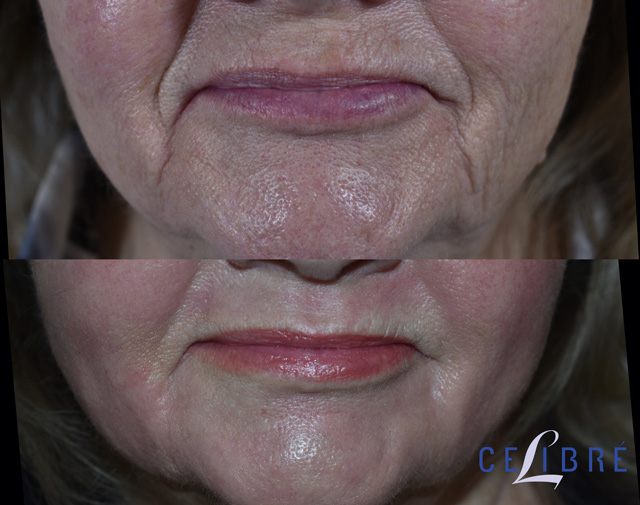

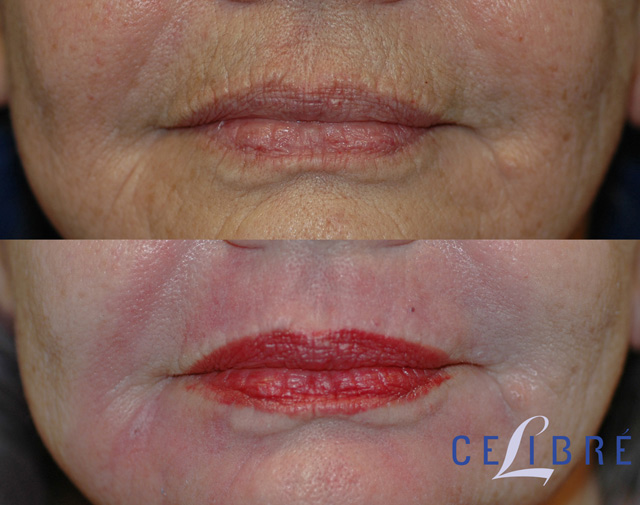
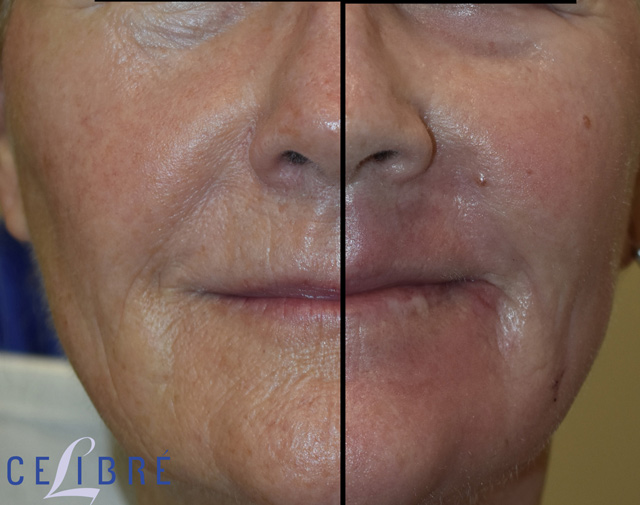
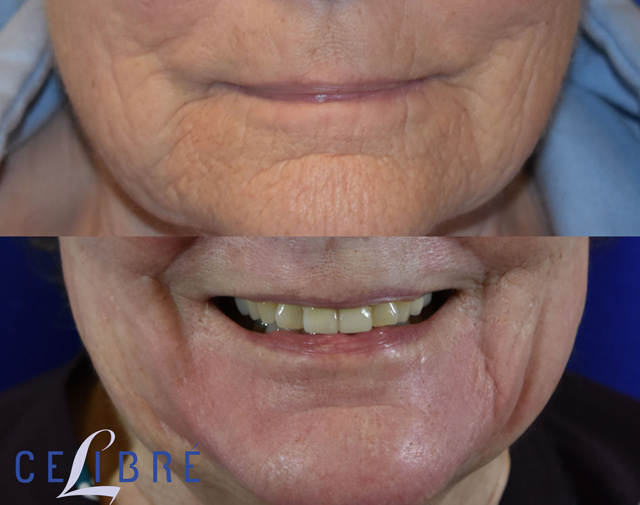
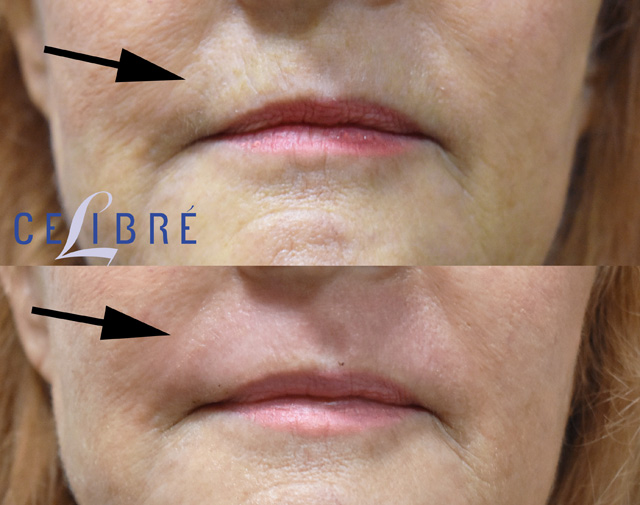
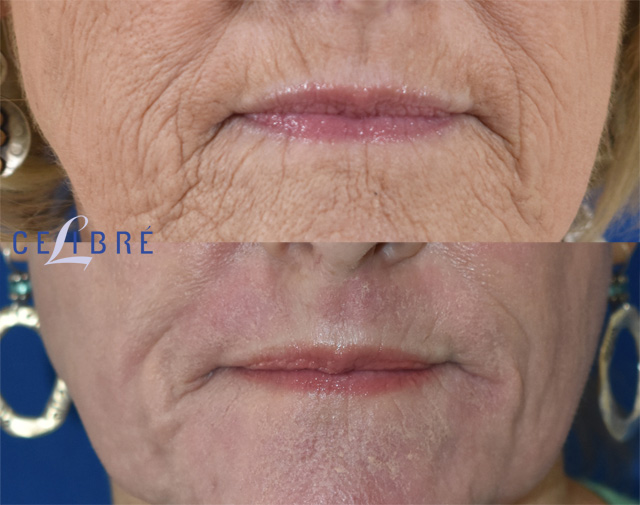
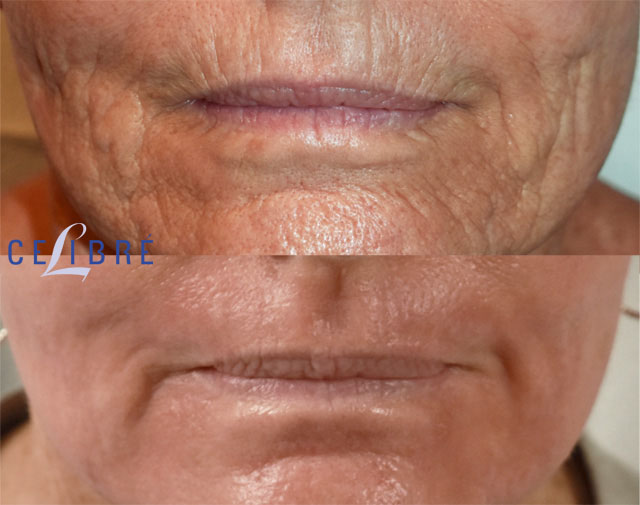
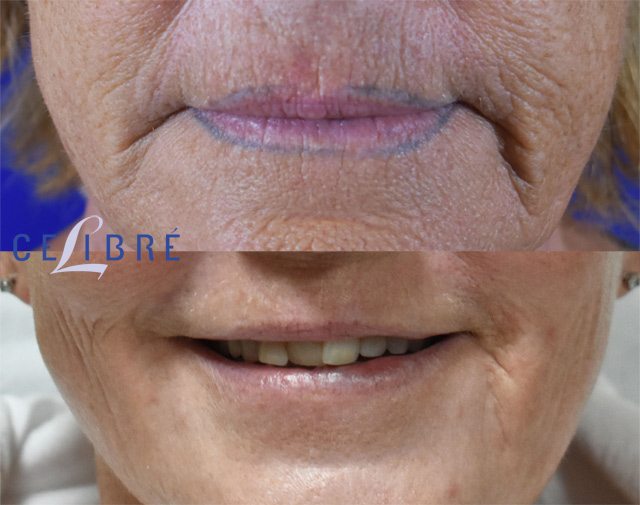

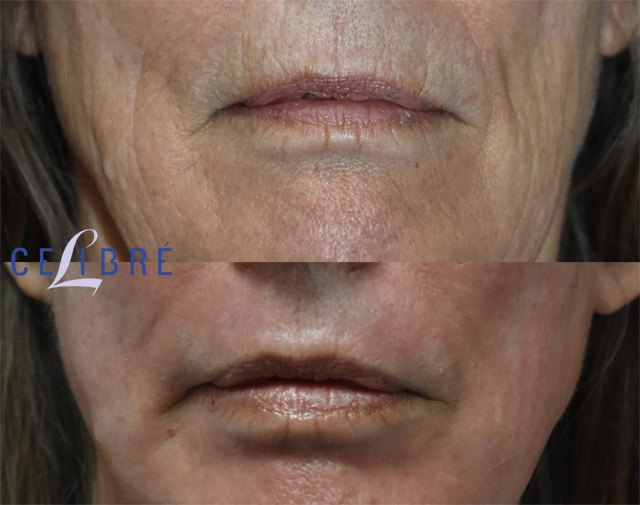
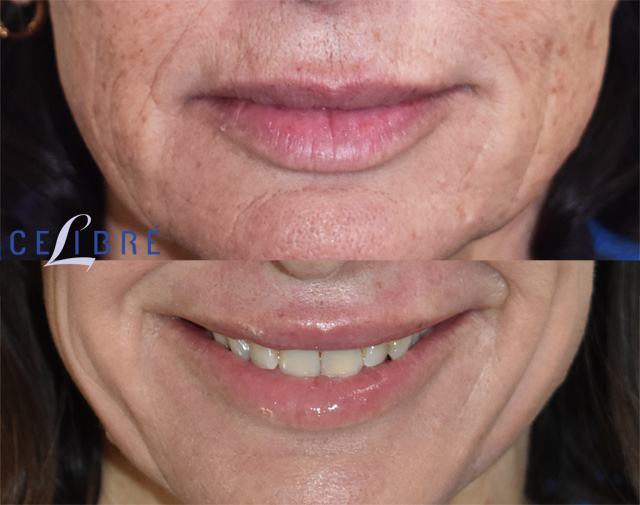
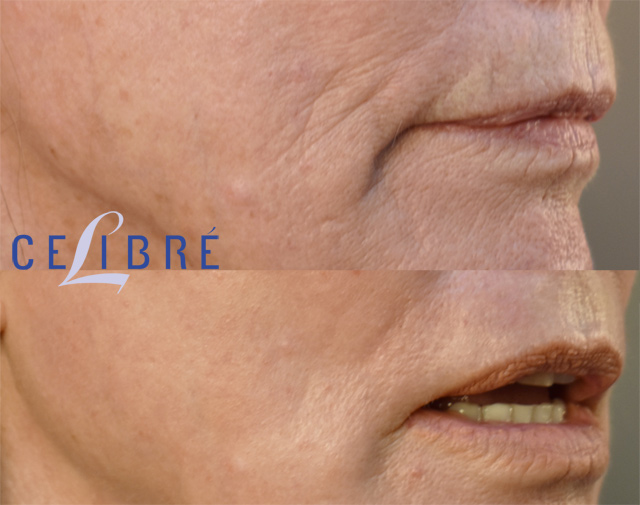
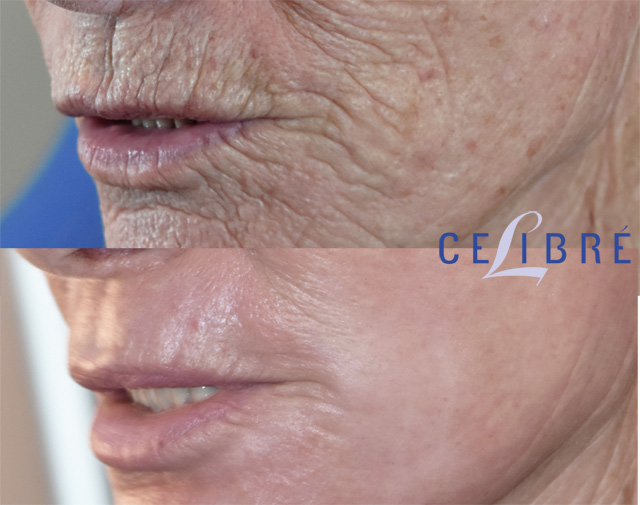
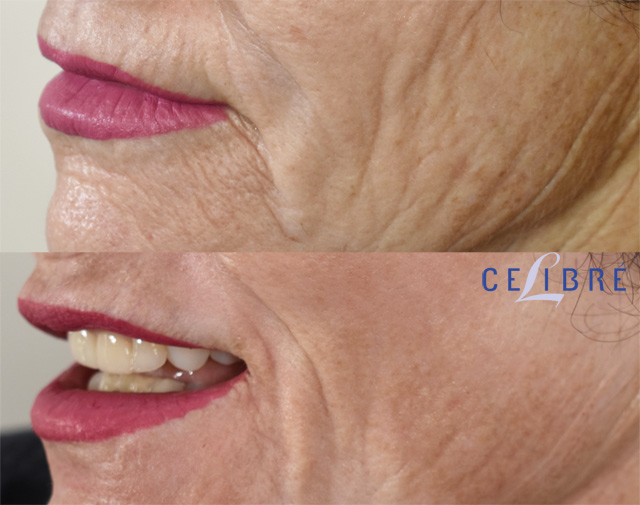
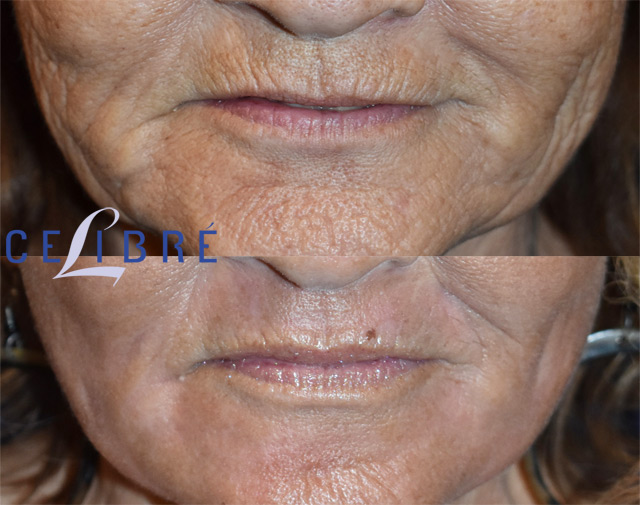
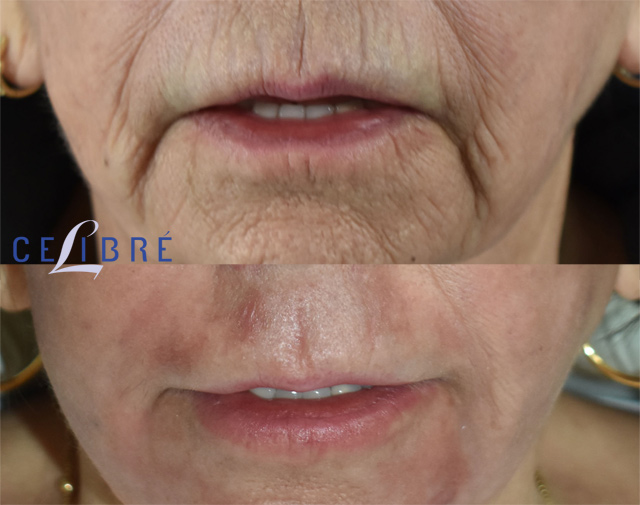
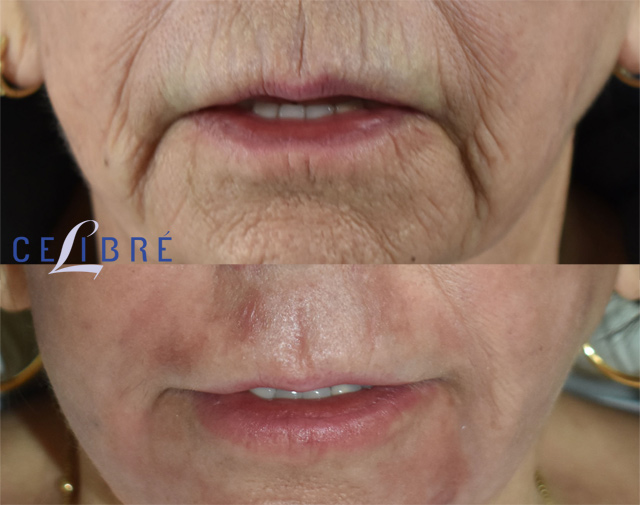


















Because smoker’s lines often appear at a younger age than other wrinkles. They can create an inconsistently aged appearance around the mouth compared to the rest of your face. Fortunately, laser resurfacing is a safe and effective way to significantly reduce or even eliminate yours. This overview presents information on how laser resurfacing works to treat your smoker’s lines, including the benefits of the procedure, the types of lasers used, what to expect before and after treatment. And why it is a popular choice among patients like you that want to eliminate smoker’s lines.
Smoker’s lines are primarily caused by two factors: repeated muscle contractions and the natural aging process. When you smoke, talk, laugh, eat, and otherwise move the mouth, it creates pursing movements around the lips that, over time, can lead to the development of lip lines. This repetitive motion can cause the skin around your mouth to lose its elasticity, resulting in the formation of fine lines and wrinkles.
Additionally, the loss of fat, collagen, and elastin as we age exacerbates the formation of these lines. Reduced skin hydration and sun damage may also contribute to the deepening of these lines. While these wrinkles can appear in anyone, they tend to be most prominent in smokers due to the combination of lifestyle habits and the aging process.
Laser resurfacing is a cutting-edge cosmetic procedure that uses high energy, concentrated light to remove damaged skin layers and stimulate the production of new, healthy skin. This process can significantly reduce the appearance of wrinkles, fine lines, sunspots, and other skin imperfections. In the case of smoker’s lines, laser resurfacing targets the tissue around the mouth, helping to smooth the skin and stimulate collagen production, resulting in a more youthful and rejuvenated appearance.
There are two primary types of lasers used for this procedure: Erbium and CO2.
Fully ablative lasers, such as Erbium and CO2 (carbon dioxide), work by removing the outer layers of damaged skin. The term fully ablative refers to the fact that 100% of the skin’s surface has been removed during the procedure, compared to fractional resurfacing (see below). As the procedure progresses the laser gently removes a thin layer of tissue, the epidermis, and in some cases a smaller portion of the dermis, the second layer of skin. When completed, the area may feel like when you scrape a knee or elbow – the skin weeps or is wet with lymph fluid for a few days. Fully ablative laser resurfacing also heats the underlying layers of skin, promoting collagen production and skin tightening. It comes with a little more downtime, but significantly superior results.
Both Erbium and CO2 lasers are effective for deep wrinkles and skin resurfacing. However, because fully ablative lasers remove layers of skin, they typically require a longer recovery time compared to fractional lasers. In our experience, fully ablative resurfacing is far superior to fractional resurfacing when it comes to the treatment of smoker’s lines. Erbium and CO2 are both good resurfacing options. But we prefer Erbium resurfacing because it is more easily absorbed by the skin and has less risk for lightening of the skin post treatment with medium and darker skin tones.
Fractional is a common laser resurfacing technology. In contrast to fully ablative laser resurfacing, fractional technologies – as the name implies – only resurface a portion of the skin, typically between 10% – 50%. These lasers are less invasive than fully ablative because the tissue surrounding the small perforations that the fractional laser creates is intact skin. Because most of the skin is not resurfaced. The recovery time for fractional lasers tends to be about 1⁄2 of fully ablative. Similarly, the results for smoker’s lines are also much less dramatic than with fully ablative resurfacing.
Laser resurfacing offers numerous advantages when it comes to treating smoker’s lines. Here are some of the key benefits:
The most significant benefit of laser resurfacing is its ability to reduce the appearance of smoker’s lines. The procedure helps to smooth out fine lines and wrinkles, resulting in a more youthful, plump, and refreshed appearance.
Laser resurfacing stimulates the production of collagen, the protein responsible for skin elasticity. As collagen production increases, the skin becomes firmer and more toned, improving the overall texture and structure of the skin around the mouth.
Laser resurfacing is a non-invasive procedure, meaning there are no incisions or stitches involved. This makes it a great option for individuals who want to avoid the risks and downtime associated with more invasive procedures like facelifts.
The results from laser resurfacing can last from months to years, depending on the type of laser used and how the procedure is performed. Collagen production continues to improve after the procedure, leading to gradual and lasting skin improvement.
Before undergoing laser resurfacing for smoker’s lines, it is essential to have a consultation with a qualified healthcare professional. During this consultation, your practitioner will assess your skin, discuss your goals, and recommend an appropriate treatment option based on your skin type, the severity of your wrinkles, and your overall health.
At our practice, several medications are prescribed pretreatment and some of those medications need to be started ahead of time. Our pre-treatment instructions discuss the medications and instructions for taking them.
On the day of the treatment, a topical anesthetic is typically applied to the treatment area to minimize discomfort. In some cases, depending on the type of laser and the area being treated, a local anesthetic may also be used to provide comfort throughout the procedure. Finally, nitrous oxide and medications for pain and relaxation are used to make the procedure more comfortable. The actual laser treatment takes between 20 – 30 minutes for a full-face treatment, but only a few minutes for just the smoker’s lines.
During the procedure, the laser will be directed at the skin around your mouth. The laser energy removes sun damaged skin and targets deeper layers to stimulate collagen production.
After the procedure, it is normal to experience a sunburn like feeling for 90 minutes post treatment. In the 7 days following treatment redness, swelling, weeping of the skin and mild discomfort are normal. Day 7 – 14 involves continued redness and healing to the point where makeup is usually worn at 2 weeks post procedure. In the post treatment phase, we provide aftercare instructions as well as skincare products to recover with.
While laser resurfacing is safe, it is not without potential risks. These risks include:
Hyperpigmentation or Hypopigmentation: The treated area may become lighter (hypopigmentation) or darker (hyperpigmentation) than the surrounding skin.
Scarring: Although rare, some patients may experience scarring after laser treatment, especially if post-treatment care is not followed correctly. Permanent scarring has never occurred at Celibre.
Infection: As with any skin treatment, there is a small risk of infection if the skin is not properly cared for after the procedure.
Laser resurfacing is an excellent option if you are looking to improve or reduce the appearance of smoker’s lines. If you are tired of looking at lipstick lines around your mouth and regain a smooth, youthful appearance, laser resurfacing may be the right option for you.
